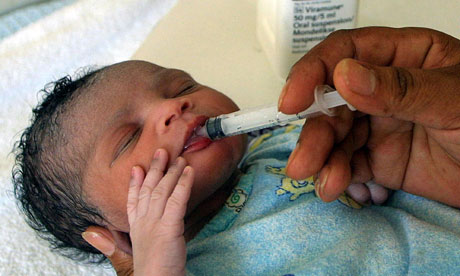
The first children with Aids were identified in the USA in 1983, two years after the first cases among gay men in San Francisco. This new and inexplicable disease was a death sentence. Nobody knew what it was, how it was caused or why it manifested in a variety of symptoms in different people. All they knew was that nobody was surviving.
It wasn't immediately obvious that children with HIV had caught the disease from their mothers. The first report in 1983 wrongly suggested some sort of household transmission. But the following year the virus was isolated which was causing what came to be known as acquired immune deficiency syndrome, or Aids. With the identification of human immunodeficiency virus (HIV), it became likely that transmission occurred in the womb or at birth. And for the first time, drugs against this new virus would become possible.
The first drug against HIV was AZT, which was shown to slow down the progression to Aids in 1989. But it was not until 1996 that "the Lazarus effect" began to be seen in US hospitals. Treatment with a combination of three drugs took patients from emaciation and the edge of death back to health. Deaths in wealthy countries began to drop markedly in 1997.
The drugs were also able to stop women with HIV from passing the virus to their babies in childbirth. In 1993, about 20% of infants born in the UK to HIV positive mothers were infected. By 1998, that was down to 2%. Now, routine antenatal testing means that only those women who do not engage with the health system in their pregnancy, perhaps because they have just arrived in the UK or belong to an ethnic group which does not so readily engage with antenatal care, may be at risk of having a baby with HIV. There are about 100 such births a year.
Back in the 1980s and 90s, nobody expected children to survive to adulthood. The early drugs were toxic and intended for adults, not children who needed scaled-down doses. They sometimes had serious side-effects. There is now a cohort of teenagers living with the virus, while trying to cope with the social and emotional traumas of growing up. Some just want to be like everybody else – which means not taking daily medicines. A study of 1,000 children in Europe born with HIV published last year found that one in eight had resistance to all three classes of drugs which, in combination, are used to suppress the virus in their bodies and keep them well.
• This article was amended on 12 March 2012. The original referred to auto-immune deficiency syndrome, or Aids. This has been corrected.

